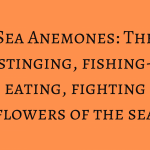Purple Urchin Takeover
The infamous urchin barren, a rocky and bare sea floor, overrun by spiny purple sea urchins as far as the eye can see. In some areas of the Pacific coast in what used to be lush kelp forest, hoards of ravenous purple urchins (Strongylocentrotus purpuratus) have taken over. Their insatiable hunger for algae and seaweed makes an urchin barren void of most other life and leaves urchins to wait endlessly for food. However, urchins are one of few kelp-eating animals that can enter a dormant state when food is scarce, allowing them to wait for months or even years for the opportunity for more food. Urchins can collect in large groups of hundreds to millions, literally clear-cutting kelp forests as they move along the seafloor. Forests of Giant Kelp (Macrocystis pyrifera) and Bull Kelp (Nereocystis luetkeana) have been severely reduced in the Eastern Pacific ocean due in part to massive, unchecked urchin barrens.
How does the seafloor go from kelp forest to urchin barren? One factor is the changing climate resulting in warm water events, such as El Niño, that can cause kelp to die off and urchins to move in as they look for food. However, one of the main reasons urchin populations boom is a lack of predators – specifically sea otters and sunflower stars in coastal BC (California sheep-head fish and spiny lobsters prey on urchins further south). Both of these main predators have faced intense challenges and population declines, leaving the ecosystem out of balance.
At the end of the 19th century, kelp forests were so dense along much of the west coast waters that boats could barely navigate them. At the same time, the demand for sea otter pelts in Asia and Europe was so high that otters were hunted to the point of near extinction on the Pacific coast from Southern California to Alaska. Sea otters will eat roughly 25% of their body weight per day in urchins and other shellfish which maintain a healthy balance between urchins and kelp. Eventually it became clear that sea otters are a keystone species that dictate the health of the entire kelp forest ecosystem. The extirpation of the sea otters caused devastating consequences to the coast as uncontrolled urchin populations mowed down kelp forests.
In 2013, a wave of Sea Star Wasting Syndrome swept through the Pacific coast, causing massive die offs of many species of sea stars. Sunflower Stars, another main predator of the purple urchin, were hit particularly hard and populations severely declined. Sea star wasting syndrome is still prevalent and Sunflower Star populations have not yet recovered, and as such they are not able to contribute to maintaining urchin population control as an urchin predator. More research and conservation efforts are needed to support the recovery of their populations and their role in a healthy kelp forest.
What else eats urchin? Well, humans do! Uni, or urchin roe (the gonad organs) is a delicious and popular seafood item. Can we harvest more urchin and eat our way out of urchin barrens? As usual, it’s not that simple. When urchins in an urchin barren have little food and enter a dormant state, their gonads shrivel as energy stores are used up, rendering the urchin inedible and worthless. In some areas, urchins are culled in an attempt to reduce numbers and bring back kelp forests, however, some people are testing an alternative and foraying into urchin ranching. This technique includes harvesting dormant urchins and bringing them to a land-based facility where they eat algae grown intentionally to feed them. As urchins eat again, their gonads grow back to a healthy size which can be later harvested and sold.
Whether or not urchin ranching can be scaled to a point where the urchin roe is affordable and urchin populations are more controlled is difficult to say. Either way, it is important that we do what we can to support kelp forests and their regrowth on the coast, including combating climate change and careful management of coastal development. Kelp forests are an incredibly important ecosystem, providing the foundation of so much life on the coast, including Northern Abalone, salmon, and herring. Kelp forests capture and store carbon, reduce coastal erosion, provide habitat for juvenile fish, and much more. They are a mighty but vulnerable ecosystem that provides so much and is in need of our support and protection from urchin take over.
Written by: Jordan Hawkswell




